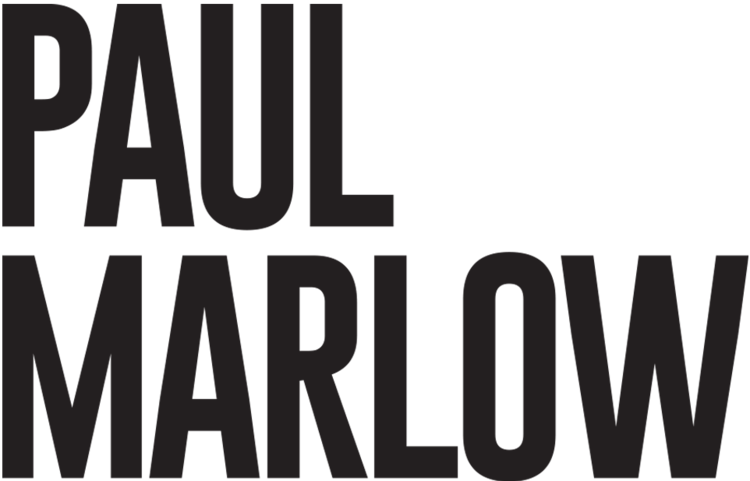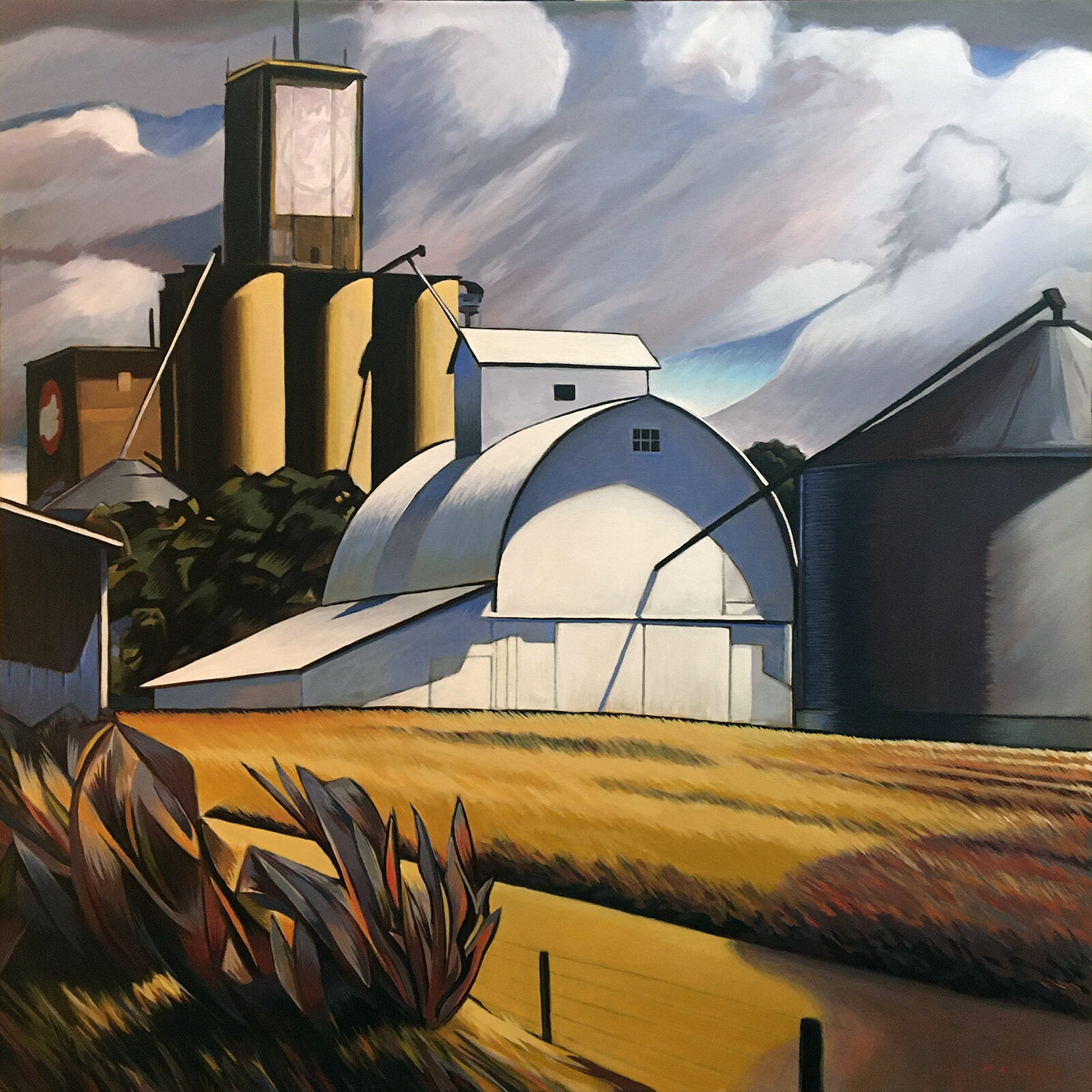Once upon a time, I thought the name “Frytown” was slang for Iowa City — home of The University of Iowa and legendary head football coach Hayden Fry. Only years later did I learn that Frytown is an actual place, a tiny unincorporated hamlet 10 miles southwest of Iowa City.
Farm Near Frytown. 2021. Acrylic on canvas. 36 in. x 36 in.
Frytown is quintessential Iowa. Rich, rolling farmland abounds. Drive down ‘Orval Yoder Turnpike’ (that’s an actual road) or Angle Road SW, and you’ll likely see an Amish buggy or two. A friend who grew up just down the road from Frytown said that this painting “brings back sweet memories of riding my bike in to get a bottle of pop at the gas station.”
As a boy, I had a similar experience. I grew up in Center Point, Iowa, 54 miles north of Frytown. My friends and I would ride our bikes down Washington Street, past the L.J. Dennis & Son grain elevator and the old railroad depot, down to Rhinehart's Skelly for a 16 oz. glass bottle of ice-cold RC Cola, Dr. Pepper or Orange Crush. It was liquid nirvana on a dusty summer day, for a mere 35 cents. Quintessential Iowa? You bet.
There is something immensely satisfying about capturing on canvas, the warmth and beauty of a balmy summer day in Iowa—especially during a frigid winter’s day in Iowa, when the high temperature is -3º F.
I started the above canvas on Jan 26, 2021, but it’s based on a photo I took 2-1/2 years ago, while on RAGBRAI, the annual bike ride across Iowa. While I was off-route west of Hills, Iowa, I passed this farm west of Frytown. I was so impressed by the scene, I had to turn around and go back. I snapped a photo that I knew would make an interesting painting.
Source photo for Farm Near Frytown, July, 2018.
Clearly there is a sense of nostalgia and appreciation of rural America in Farm Near Frytown. At 36 inches x 36 inches, this painting appears to monumentalize a common moment of everyday life on an Eastern Iowa farm. Pristine barns like this are becoming more rare in the Midwest every year. But this painting isn’t all smiles and sunshine. There is a bit of drama going on, and perhaps an unsettled feeling of foreboding. Many areas of rural America have seen better days, and this painting reveals hints of this. A tumultuous sky, paint peeling from a towering old grain elevator, and the shadows of clouds in the foreground all signal that trouble may be on the horizon.
“What you see in this painting is the way I see the world: Beautiful, and strangely compelling.”
I decided to apply the same angular treatment and delineation technique from my geometric abstraction style of Abstract I, but with a more realistic subject. It was a challenge to render the organic elements in an abstract style, without reverting back to my realist-painter sensibilities too much. Yet I was able to take a tangle of nondescript bushes in the foreground and give them movement and character. They could almost be a successful painting by themselves.
Close-up of bushes in the foreground of Farm Near Frytown.
Admittedly, I took some artistic license with Farm Near Frytown. Normally, a soybean field is dark green at the end of July in Iowa. But I didn’t want green to dominate this canvas, so I ‘sped up the harvest’, so to speak. This is closer to a September-October field, where I could embellish the work with deep golds, reds, oranges and purples.
I like what’s happening on this canvas. I wanted to capture the light and shadow while simplifying line, shape and color to make the subject beautiful. Add a little drama, and it’s strangely compelling.
Just like Abstract I, I used acrylics, which allowed me to work quickly and keep the energy flowing. Acrylics dry almost as soon as you put them on the canvas. It would have been easier to use slower-drying oils, but I like the challenge of working fast and making decisions on-the-fly. Technically, I’m applying acrylic paint in very much the same way I work with oils. I’m using many layers, occasionally adding a gel medium to the pigments to create glazes, or thin layers of transparent color. Does it work? You be the judge.
Could I make this painting look exactly like the photograph? Sure.
But what’s the fun in that? A photo is a photo. While photos can be a helpful reference, they often lack something enigmatic—that special sauce that makes you want to look deeper. Visually, a photo may seem to reveal everything, but in doing so, it often misses what lies just beneath the surface. It was important for me to capture this scene with paint on canvas, to show more than what a mere photo can provide.
What you see in this painting is the way I see the world: Beautiful, and strangely compelling.
* * *
Production notes: (for my fellow artist-friends) I toned the canvas (imprimatura) with a combination of Yellow Ocher, Burnt Umber and Ivory Black. I stayed close to a Zorn’s palette with this work, but added Ultramarine Blue and tiny hit of Brilliant Blue for the sky. The limited palette of earthy colors (Yellow Ochre, Vermillion [or Cadmium Red Medium], Burnt Umber, plus Ivory Black and Titanium White) create beautifully harmonious color combinations that have a remarkable range. (If you’ve never used a limited palette, I encourage you to give it a try). I also used Utrecht Acrylic Gel Medium (matte) to create blends and glazes.



